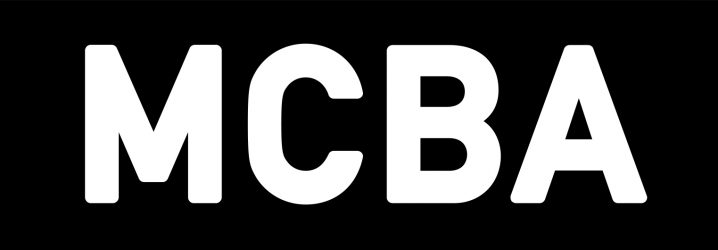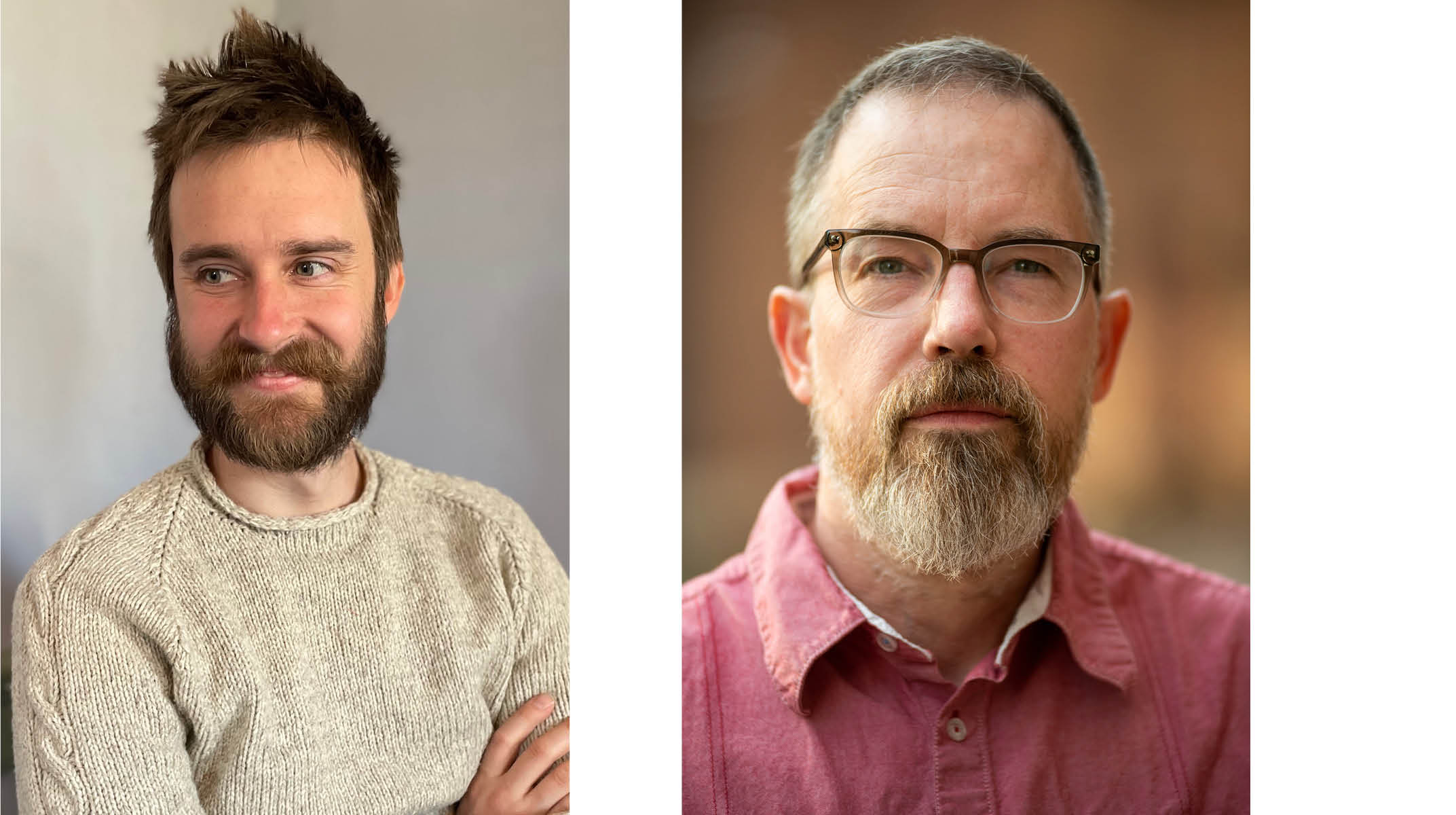
Please join us in congratulating the 2023 McKnight Book Artist Fellows, Brien Beidler and Todd Thyberg! Brien is a bookbinder and toolmaker whose work celebrates pre-industrial bindings in a 21st-century context, and Todd is a book artist with a background in creative writing, graphic design, and letterpress printing.
Brien and Todd will both be awarded $25,000 in unrestricted funds to explore and deepen their art practice thanks to our partnership with the McKnight Foundation, which supports two exceptional Minnesota-based book artists annually. The pair will also receive a range of professional benefits through MCBA, including studio visits from a national critic/curator; stipends for conferences, residencies, and tutorials; the opportunity to participate in an artist panel at Open Book; 24/7 studio access for two years; and a group exhibition in MCBA’s Main Gallery.
Esteemed jurors Julie Chen, Christopher Kardambikis, and Barbara Tetenbaum (bios below) shared their positive impressions of the two artists’ portfolios following virtual studio visits with the finalists in April.
“I was impressed by [Thyberg]’s deep concerns about the future health of our planet and the many projects that he has in the works to address this from many perspectives and engaging different audiences,” said Tetenbaum.
During his upcoming fellowship year, Thyberg will finish several books in progress as well as sail to Antarctica as research for future work.
“Currently, I am working on pieces centering on climate change and its dire implications for the polar regions,” said Thyberg. “The McKnight Book Arts Fellowship will provide me with time to write and pursue avenues of deeper emotional connection through narrative development and structural interactivity with the reader.”
Christopher Kardambikis called Beidler a “contemporary master of craft who keeps beautiful and laborious processes alive and current.”
Kardambikis added that “[Beidler’s] collaborative practice makes room for, and supports, the local community in exciting ways.”
Beidler plans to use his engraving skills to work with a printmaker on a project exploring the interplay of historic botanical images and contemporary relationships with plant life, as well as with a letterpress printer on a small edition of his book detailing what is said and left unsaid about the history of African peoples in the United States.
“Receiving this professional recognition and support for the work I’ve dedicated my life to is incredibly meaningful,” said Beidler.
We invite you to view their work and learn more about our 2023 McKnight Book Artist Fellows below. Beneath that, you can also find biographical information about our jurors.
Congratulations to our 2023 fellows!
Brien Beidler
BIO
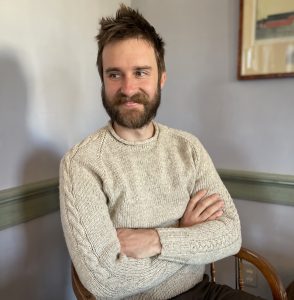 Brien Beidler is the proprietor of Beidler Made, a bookbinding and toolmaking practice located in the Northeast neighborhood of Minneapolis. He operates within a small niche, making bespoke leather books for book lovers and specialized tools for book makers and other craftspeople. His book work celebrates the structure and aesthetics of pre-industrial bindings in a 21st century context, and his toolmaking focuses on the creation of hand-engraved decorative leather stamps, called finishing tools. Though much of his practice is dedicated to executing commissions from private individuals and fellow binders, Brien has work that can be found at the San Francisco Public Library, the Oak Spring Garden Foundation, The Library of Congress, and the Massachusetts Institute of Technology. Brien is often invited to share his binding and toolmaking through workshops at various art and craft institutions, and he has taught both nationally and internationally.
Brien Beidler is the proprietor of Beidler Made, a bookbinding and toolmaking practice located in the Northeast neighborhood of Minneapolis. He operates within a small niche, making bespoke leather books for book lovers and specialized tools for book makers and other craftspeople. His book work celebrates the structure and aesthetics of pre-industrial bindings in a 21st century context, and his toolmaking focuses on the creation of hand-engraved decorative leather stamps, called finishing tools. Though much of his practice is dedicated to executing commissions from private individuals and fellow binders, Brien has work that can be found at the San Francisco Public Library, the Oak Spring Garden Foundation, The Library of Congress, and the Massachusetts Institute of Technology. Brien is often invited to share his binding and toolmaking through workshops at various art and craft institutions, and he has taught both nationally and internationally.
Instagram: @bhbeidler.
Work
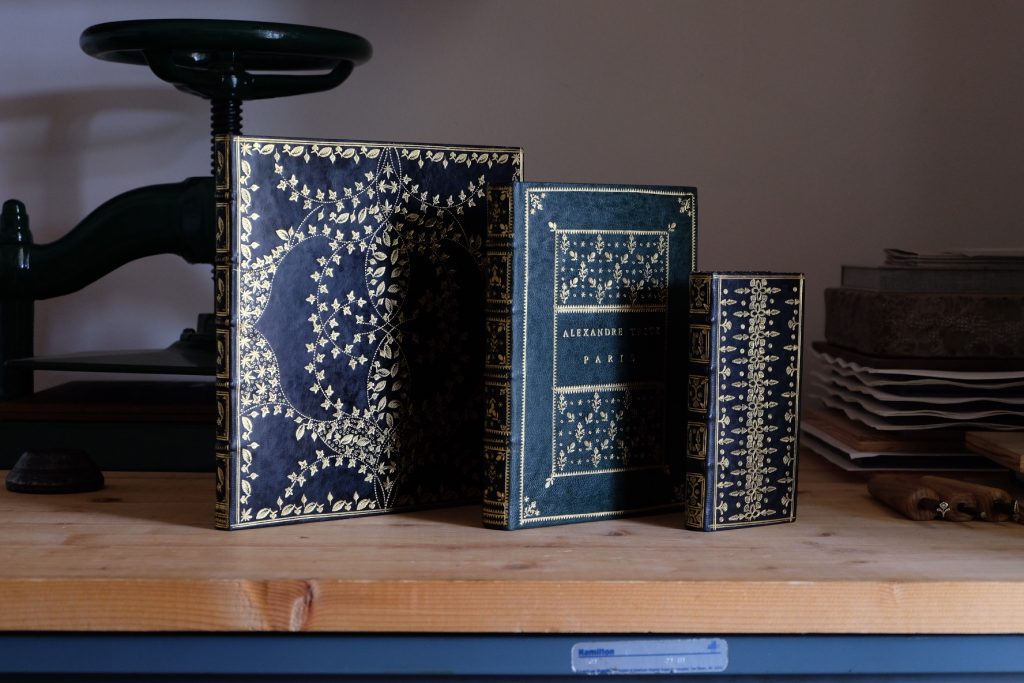
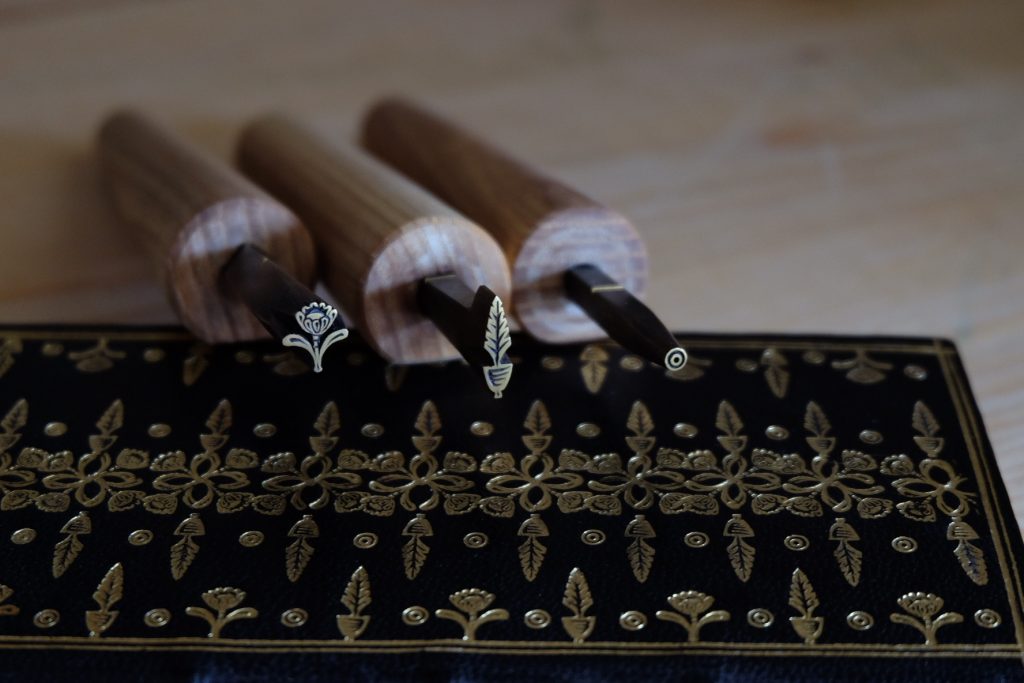
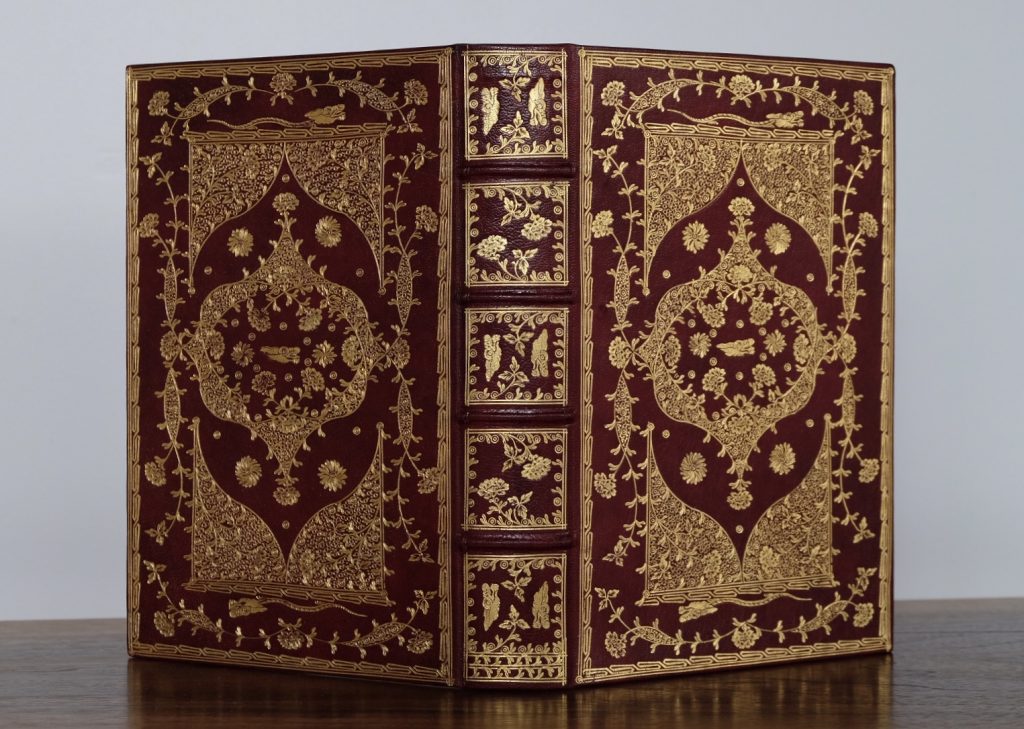
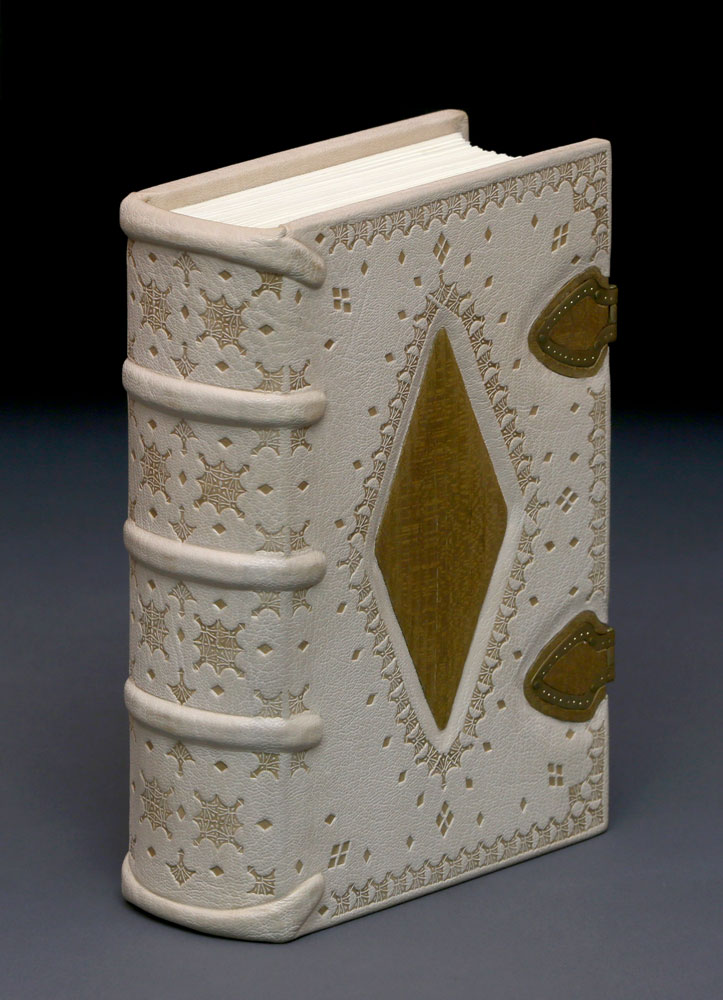
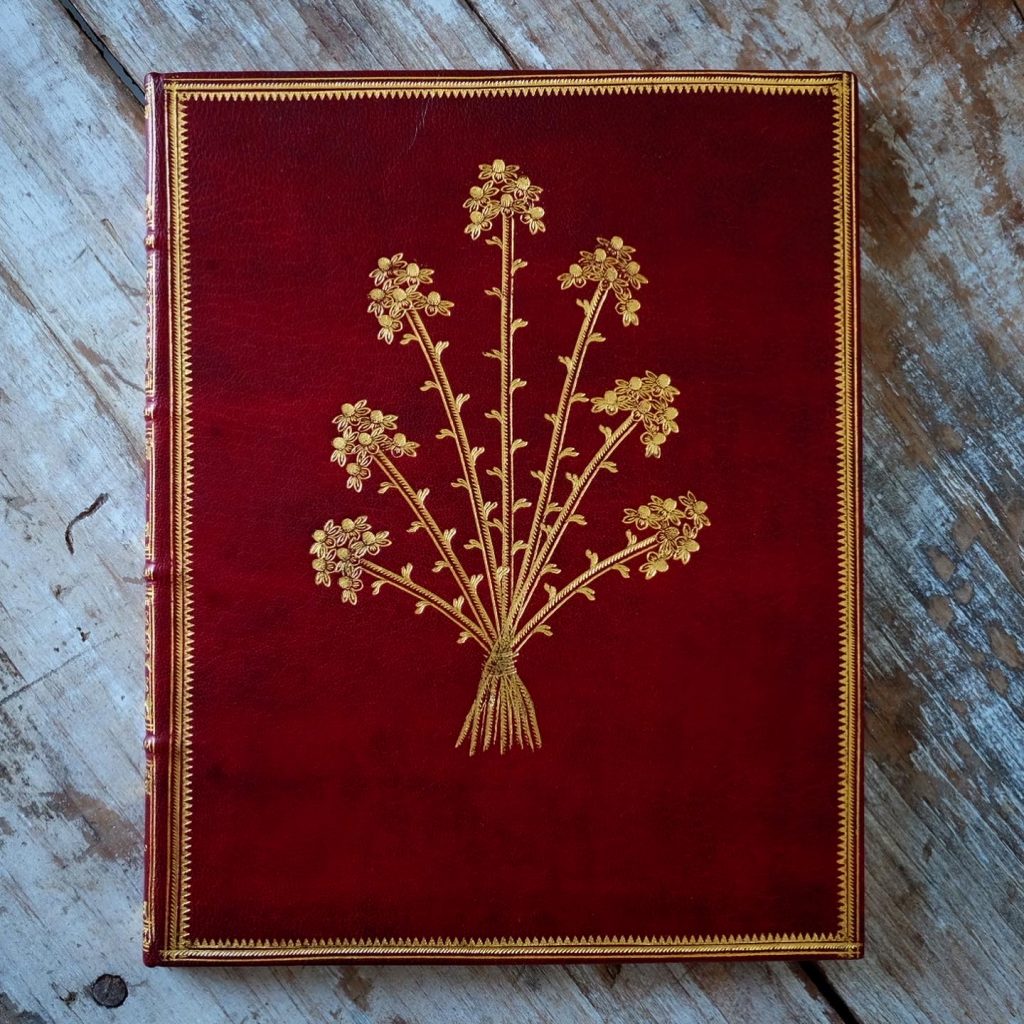
Artist Statement
As bookbinder and toolmaker, I celebrate the structure and aesthetics of pre-industrial bindings in a 21st century context. My binding practice includes the fabrication of my own hand-engraved leather stamps, called finishing tools. These occupations work in parallel to explore the beauty and symbolism of individual tool impressions made on book covers.
I am deeply inspired by the process and craftsmanship of pre-industrial bookbinders. I use tools and techniques that replicate the structural and visual properties of the books they made. The varied repetition within this tradition is its own form of beauty that reflects the hands behind the work. Expanding this practice, the covers and underlying binding can become a canvas on which combinations of finishing tools visually express a book’s concept or content. In its entirety the binding may resemble an ornate historic volume, but each tooled impression and its placement within the greater whole plays an important role in the story that book tells.
Todd Thyberg
Bio
 Ever since Todd Thyberg was a kid, he loved books and wanted to tell stories. Books were an escape from the tedium of small town life and a creative inspiration that stuck with him for life. For him, books opened up the world and exposed a wider canvas for him to explore.
Ever since Todd Thyberg was a kid, he loved books and wanted to tell stories. Books were an escape from the tedium of small town life and a creative inspiration that stuck with him for life. For him, books opened up the world and exposed a wider canvas for him to explore.
Todd studied commercial art and creative writing at the University of Minnesota and eventually started Angel Bomb to provide clients with graphic design and letterpress printing. With a focus on package design, he since has taken this skill and uses it to create books that encourage the reader to explore the object as well as what it means to them. His first two books were assisted in part through an MCBA/Jerome Book Arts Fellowship Grant and MN State Arts Board Artist Initiative Grant. These paved the way for a change in focus from client work to book arts and have allowed Todd to refine his practice. He was Master Printer for Minnesota Center for Book Arts’ Winter Books in 2014 and 2016. Todd’s work is in the collections of nearly 50 special collections including Yale University, Wesleyan University, Savannah College of Art & Design, Bainbridge Island Museum of Art, and Duke University.
Instagram: @angelbomb and @antarctichorror.
WORK
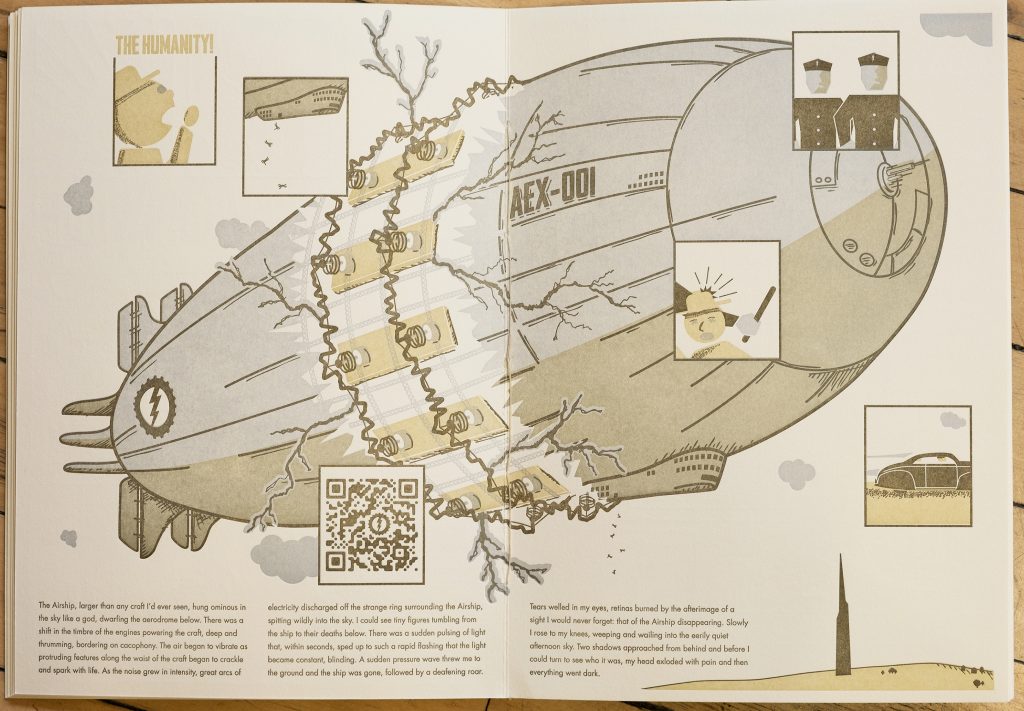
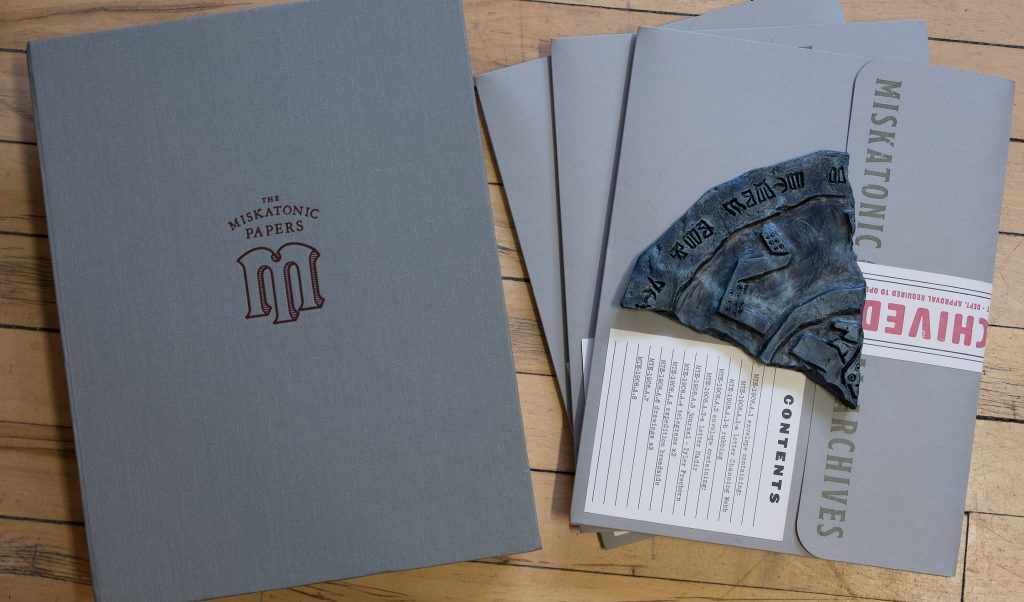
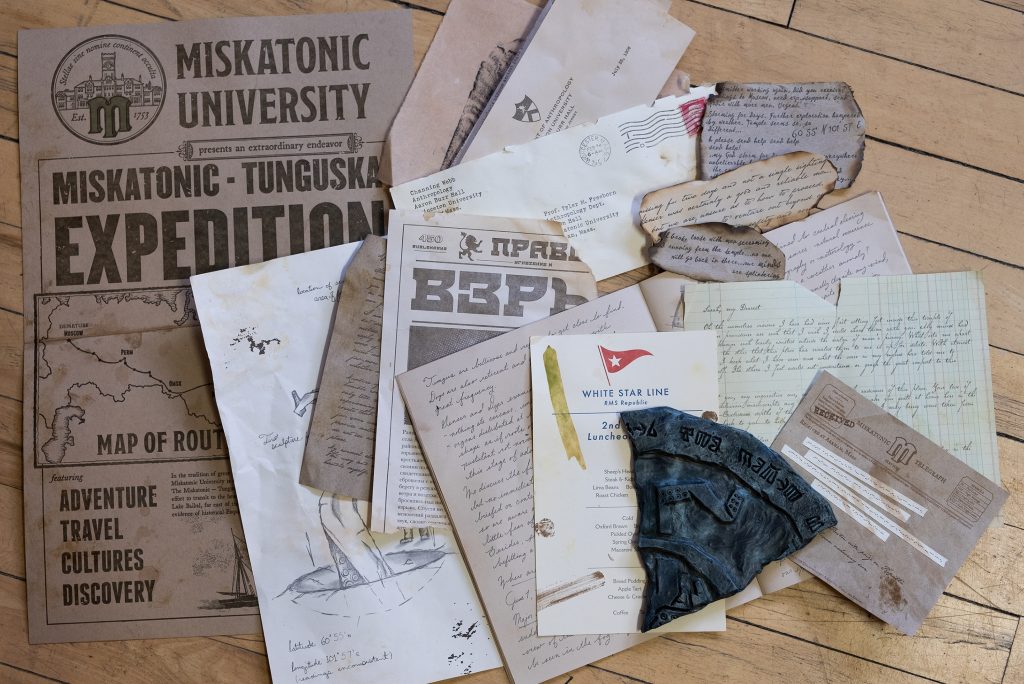
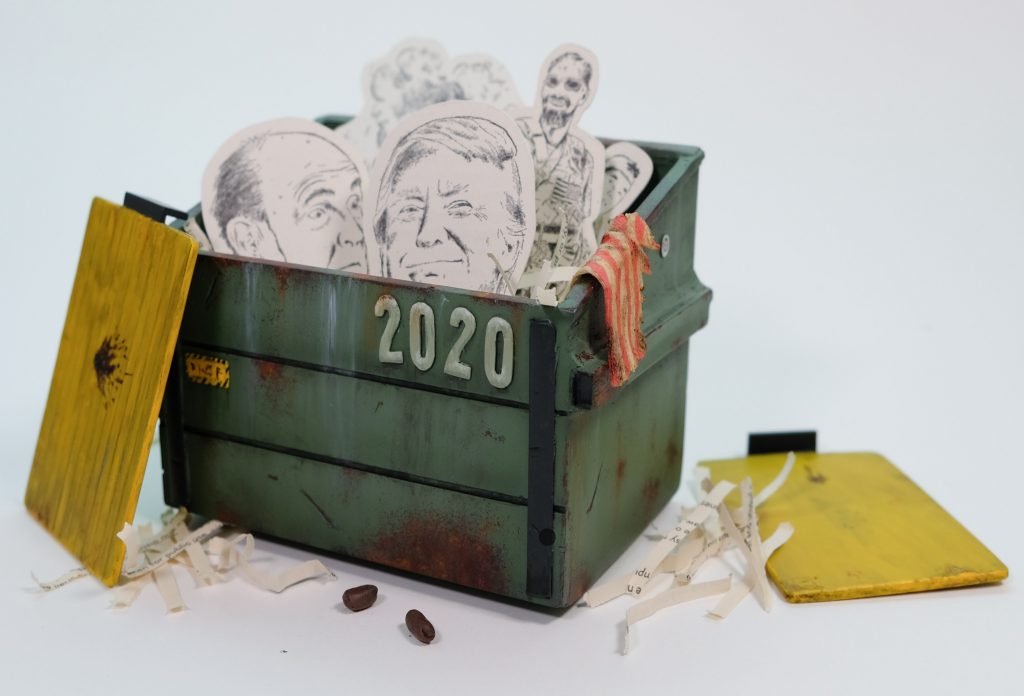
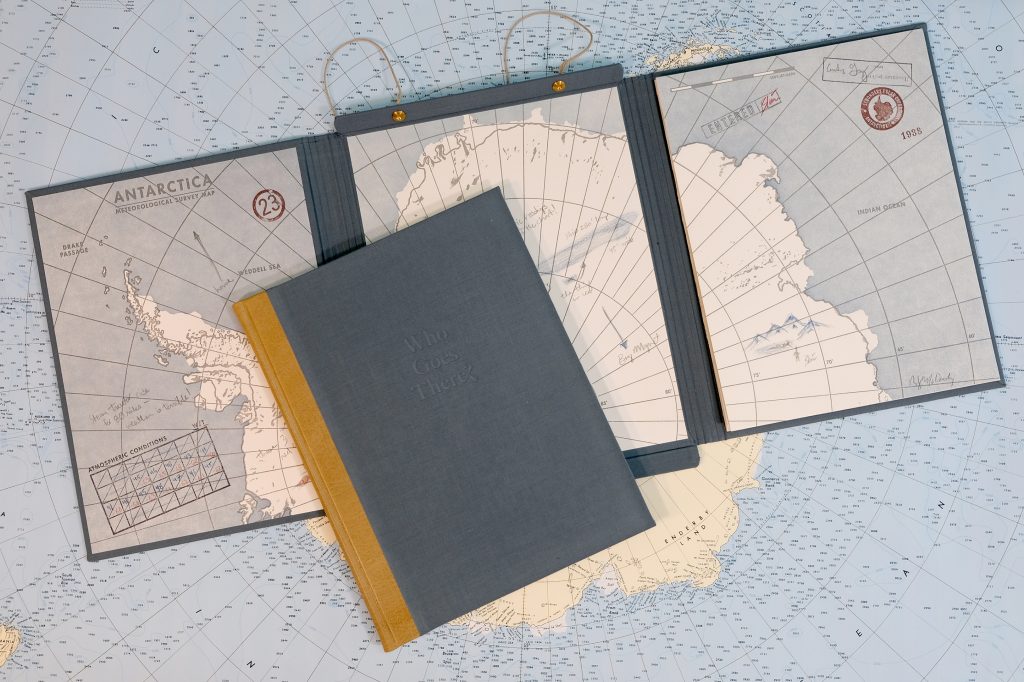
Artist Statement
My artistic vision is to facilitate deeper emotional connections to my books and promote curiosity by creating works that excite the reader’s senses. The analog nature of exploring a book is frequently lost given our mass consumption of digital media, and I believe that people long to experience something unique and engaging. Through these interactions, my readers connect with the book as an embodiment of craft and an artistic object, and form more sustained memories through exploration. My books create ever-deepening layers of meaning from the initial structure to the design and illustration choices and seek to take the reader to bygone eras through material and visual choices. I am experimenting with less traditional narrative structures and pushing the boundaries of how I use type and image.
Having traveled extensively, themes of exploration and fear of the unknown drive my work. I work in science fiction and horror genres, using existing manuscripts as well as writing original work, to delve into societal fears of things such as contagion, loss of identity, and violence which are so pertinent in today’s society. I like creating ergodic works that requires the reader to involve themselves and interpret the book through their own interaction.
JURORS
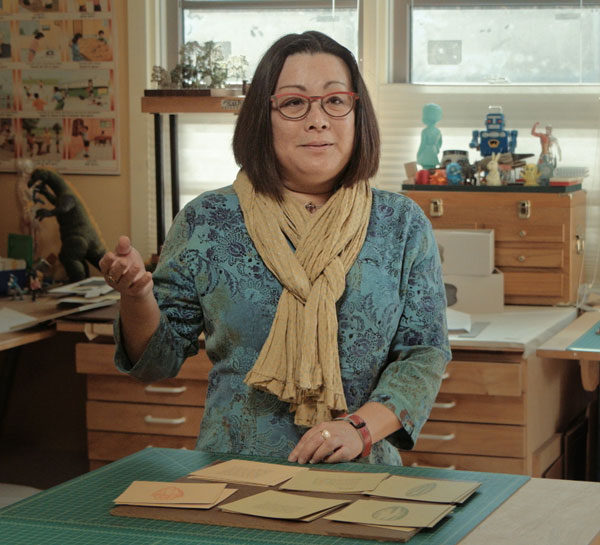 Julie Chen established Flying Fish Press in 1987, when she was a graduate student in Book Art at Mills College in Oakland, California, and she has been publishing her work under this imprint ever since. Most of the work published at the press is authored by Julie, although she has also collaborated on artist’s book projects with other artists including Lois Morrison, Barbara Tetenbaum, and Clifton Meador. More information on the history of Flying Fish Press, including many book images and essays, can be found in Reading the Object: Three Decades of Books by Julie Chen, co-published by Flying Fish Press and the Mills College Center for the Book in 2016.
Julie Chen established Flying Fish Press in 1987, when she was a graduate student in Book Art at Mills College in Oakland, California, and she has been publishing her work under this imprint ever since. Most of the work published at the press is authored by Julie, although she has also collaborated on artist’s book projects with other artists including Lois Morrison, Barbara Tetenbaum, and Clifton Meador. More information on the history of Flying Fish Press, including many book images and essays, can be found in Reading the Object: Three Decades of Books by Julie Chen, co-published by Flying Fish Press and the Mills College Center for the Book in 2016.
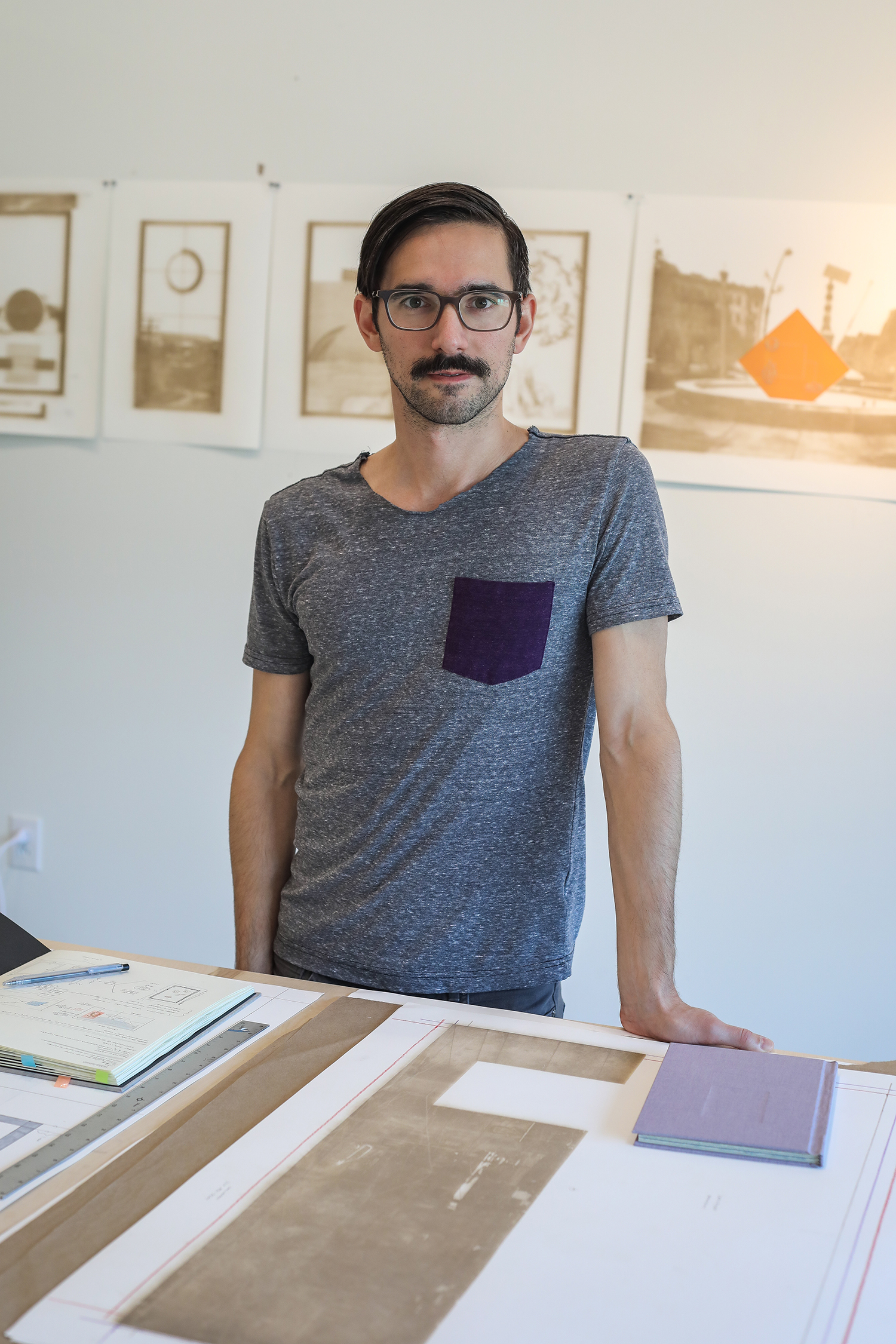 Christopher Kardambikis explores space, process, and narrative through books, prints, and drawings. A bibliophile and zinester, Christopher founded Paper Cuts, a podcast and publishing platform that documents the contemporary world of zines and artist publications, as an excuse to talk to people about the books they make. He received his BFA from Carnegie Mellon University and MFA from the University of California, San Diego. In the fall of 2016, Christopher joined the faculty at George Mason University. In 2020, Christopher co-founded Cousins’ Books with his mother, Dr. Patricia Kardambikis. Cousins’ Books is a pop-up bookshop housed inside the family’s Hot Dog Shop in New Castle, PA. A family business inside a family business, Cousins’ Books supports community by sharing stories.
Christopher Kardambikis explores space, process, and narrative through books, prints, and drawings. A bibliophile and zinester, Christopher founded Paper Cuts, a podcast and publishing platform that documents the contemporary world of zines and artist publications, as an excuse to talk to people about the books they make. He received his BFA from Carnegie Mellon University and MFA from the University of California, San Diego. In the fall of 2016, Christopher joined the faculty at George Mason University. In 2020, Christopher co-founded Cousins’ Books with his mother, Dr. Patricia Kardambikis. Cousins’ Books is a pop-up bookshop housed inside the family’s Hot Dog Shop in New Castle, PA. A family business inside a family business, Cousins’ Books supports community by sharing stories.
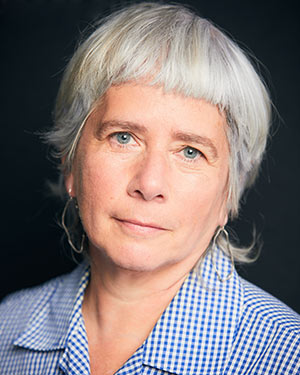 Barbara Tetenbaum is a visual artist interested in the act of reading. She uses books, print, installation, and animation to explore this topic. She founded her artist’s book imprint, Triangular Press, in 1979, and produces one to two book projects each year. Barb is the recipient of two Fulbright Fellowships, and career and project awards from the Oregon Arts Commission, Ford Family Foundation, Oregon Community Foundation, and the Regional Arts and Culture Council (Portland area). Barb led the Book + Print Department at Oregon College of Art and Craft for 25 years before the college closed in 2019. She holds a BS in Fine Art from the University of Wisconsin–Madison and an MFA from the School of the Art Institute of Chicago.
Barbara Tetenbaum is a visual artist interested in the act of reading. She uses books, print, installation, and animation to explore this topic. She founded her artist’s book imprint, Triangular Press, in 1979, and produces one to two book projects each year. Barb is the recipient of two Fulbright Fellowships, and career and project awards from the Oregon Arts Commission, Ford Family Foundation, Oregon Community Foundation, and the Regional Arts and Culture Council (Portland area). Barb led the Book + Print Department at Oregon College of Art and Craft for 25 years before the college closed in 2019. She holds a BS in Fine Art from the University of Wisconsin–Madison and an MFA from the School of the Art Institute of Chicago.
About the McKnight Artist Fellowship Program
Founded on the belief that Minnesota thrives when its artists thrive, the McKnight Foundation’s arts program is one of the oldest and largest of its kind in the country. Support for individual working Minnesota artists has been a cornerstone of the program since it began in 1982. The McKnight Artist Fellowships Program provides annual, unrestricted cash awards to outstanding mid-career Minnesota artists in 15 different creative disciplines. Program partner organizations administer the fellowships and structure them to respond to the unique challenges of different disciplines. Currently the foundation contributes about $2.8 million per year to its statewide fellowships. For more information, visit mcknight.org/artistfellowships.
About the McKnight Foundation
The McKnight Foundation, a Minnesota-based family foundation, advances a more just, creative, and abundant future where people and planet thrive. Established in 1953, the McKnight Foundation is deeply committed to advancing climate solutions in the Midwest; building an equitable and inclusive Minnesota; and supporting the arts in Minnesota, neuroscience, and international crop research.

